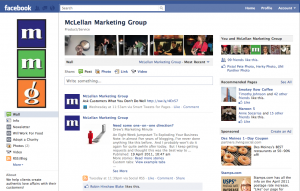Your customers are afraid to spend
August 23, 2011

…Customers are afraid of the coming tides
Building a sandcastle (with our without the pre-form buckets) is a childhood ritual that brings with it a sobering life lesson.
Unless you are uber cautious about location — the tide is going to come in and wipe out that sandcastle sooner or later. And if the tide doesn’t get it, beach walkers, dogs or 4 wheelers will do the job.
Young or old, there’s something haunting about watching the waves creep up on your masterpiece, knowing you can’t alter its fate.
I think that’s exactly how our customers are feeling today. They’re leery of investing too deeply or buying into new long-term programs because they have this nagging fear that the waves are heading back in.
The world economy’s continuing struggle, the US debt ceiling debacle and credit rating slap on the wrist and in general, a sense that it’s tougher to make a buck these days does not bode well for us as marketers.
How do we function in an environment of nervous trepidation?
Acknowledge it: Don’t hide from it. Don’t pretend it isn’t there. Be up front about it. Recognize that your sales cycles are going to be longer. Build your projections accordingly. The only way to weather the storm is to be well prepared for it.
Make the most of it: If your customers are less likely to sign long term agreements or are going to want to stretch out their payments — price accordingly. Create a new, shorter term choice but price it at a premium. That’s not taking advantage — that’s upselling.
Don’t cut your prices: This is one of the biggest mistakes business people make during tough economic times. It may make short term sense but it’s a killer long term. If you reduce your prices — you will never be able to raise them back to where they belong again.
Manage your costs by managing your customers: Not all customers are created equal. Customers who are not a good fit, demand too much of your time and don’t reward you with their dollars in equal measure are actually draining your company’s resources. Perhaps it’s time to fire some of them?
Re-think your business model: It may be that how/what you’ve sold in the past simply isn’t going to work in 2011 and beyond. Just because you want to sell it doesn’t mean there’s still a market for it. Or maybe it needs to be re-packaged or re-tooled. If you were starting a new business from scratch in your industry — what would it look like? Should you move in that direction?
You can’t work in marketing or own a business for very long without running into shifts in the economy. And we’re not going to love every shift. So you have to be willing and ready to adapt.
How are you/have you accommodated this current economic climate?
More



















